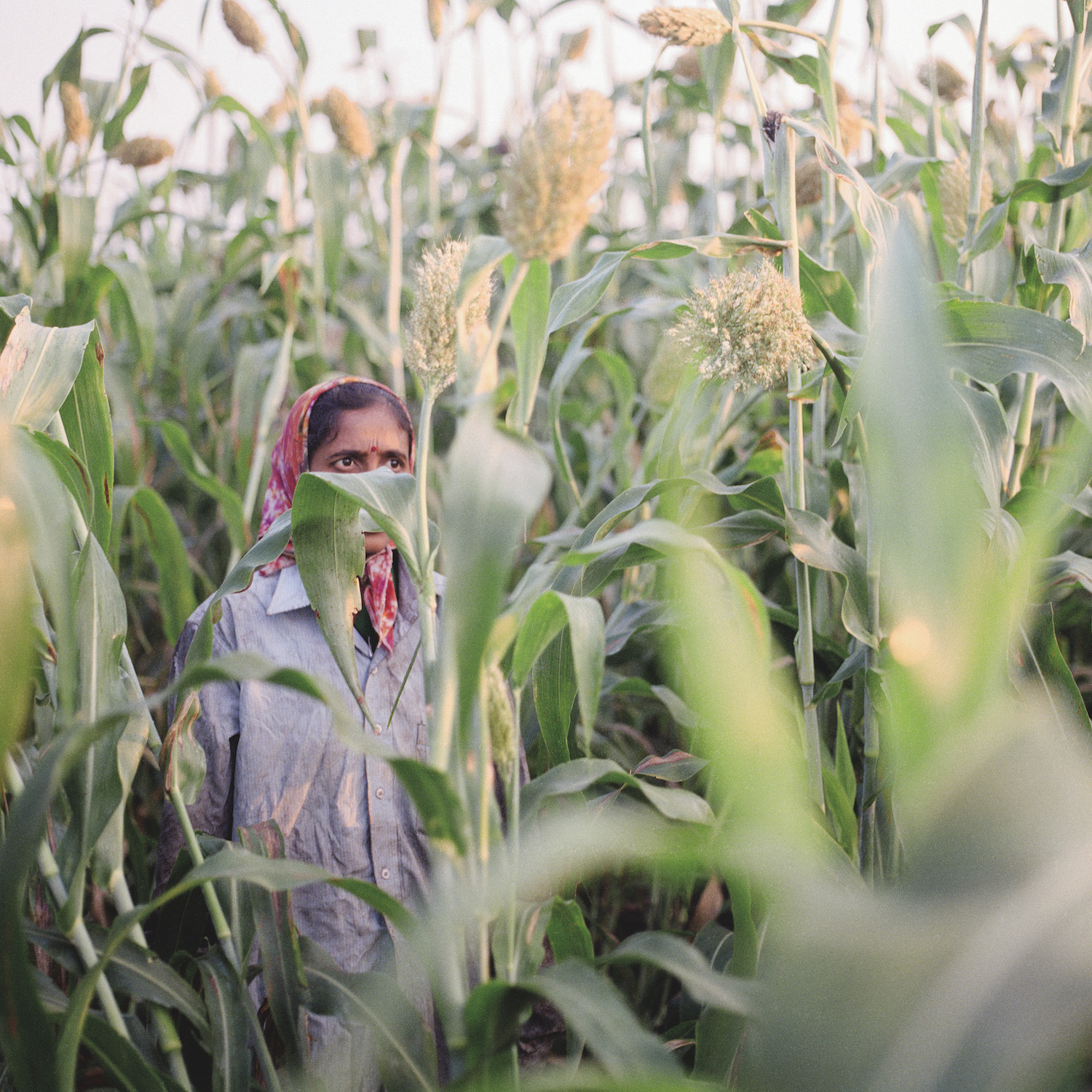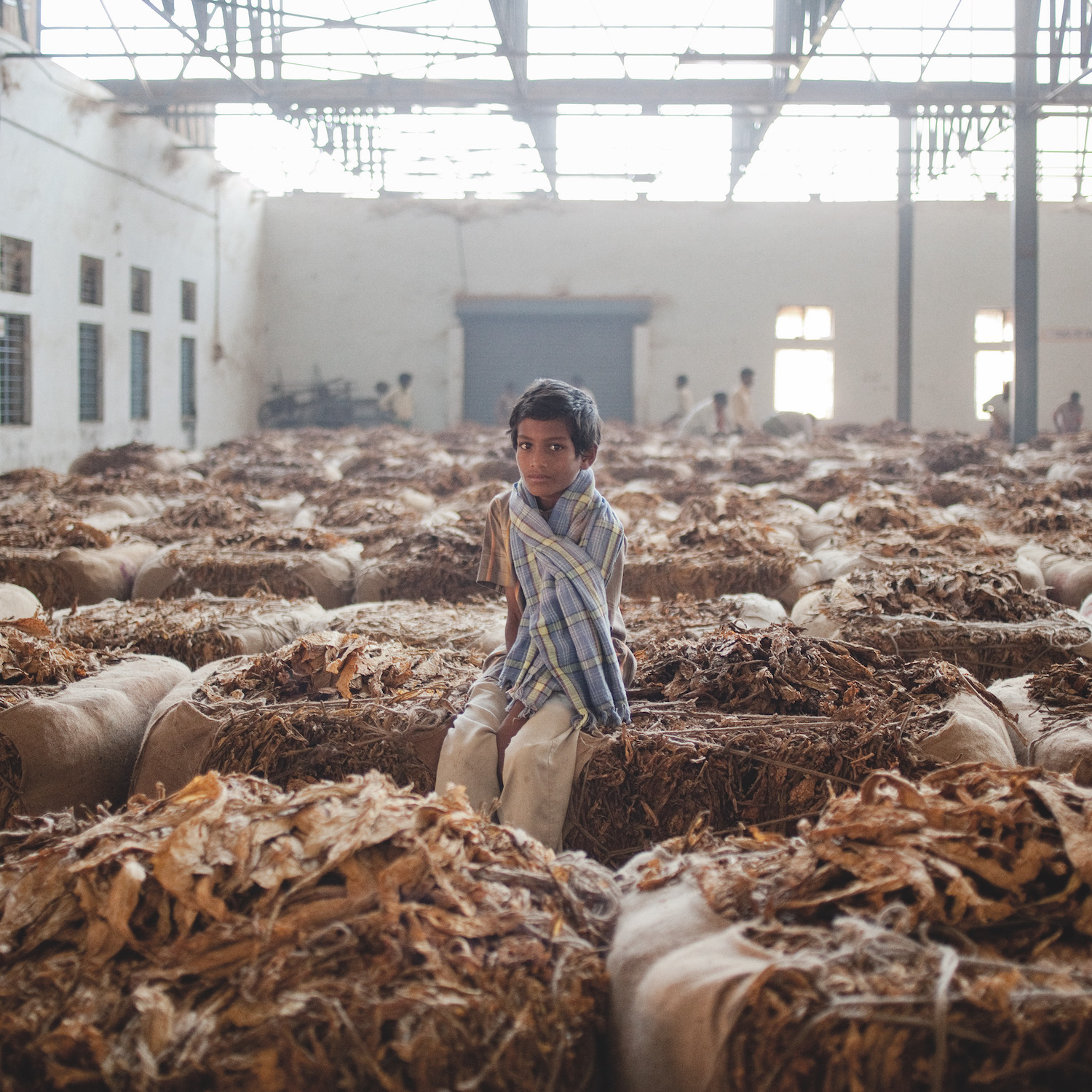The true impact of big tobacco, in photos
- Text by Huck
- Photography by Rocco Rorandelli

Every year, nearly 6 trillion cigarettes are smoked around the world by over 1 billion people. Roughly 20% of the world’s population is classified as smokers feeding a tobacco industry worth $888 billion, a figure greater than the GDP of the Netherlands.
This gargantuan industry made up of farmers, manufacturers, lobbying and marketing firms, is the subject of Bitter Leaves, a new project from Italian photographer Rocco Rorandelli exploring the scale of tobacco’s grip on our society and environment.
Over the course of a decade, Rorandelli travelled the world documenting the impact of the tobacco industry on public health, the economy, and the environment. From the tobacco fields of India to walking the conference halls of Germany, Bitter Leaves lays out how the tobacco industry has infiltrated public life and presents the startling photography alongside the even more unnerving testimony of scientist Dr Judith MacKay.
For Rocco, the project was as much a personal endeavour as a professional one. Losing his father to cancer caused by a lifetime of chain-smoking pushed Rocco to explore the impact the industry has on people up and down the supply chain.
“What I found interesting is that when you talk about smoking we usually focus on the health dangers it has on smokers but we don’t look at the other issues,” he explains. “The strength of the industry is the simplicity of cigarettes. They’re designed very sleek and clean and totally far from the reality that you can breathe and see in the fields, but also in other areas like manufacturing or marketing.”

Nipani, India. Tobacco labourer Dipali Lohar in a mixed field with bidi tobacco and sorgum. This technique helps farmers reduce their dependency on tobacco.
Rocco’s work took him around the world, to traditional tobacco-growing regions like the Southern United States, as well as closer to home in Italy and Bulgaria. It was his time in Asia though which demonstrates the reach of tobacco’s major players.
“Asia is the big player today for tobacco,” he says, “you can see how powerful and ingrained in society they are. They build roads and restore temples, but at the same time once you travel out into the countryside where the crop is actually grown you will see that the wealth is not spread evenly.”
“Landowners will praise the industry but their workers and undocumented labourers will tell you how hard it is, how they wish there was an alternative.”
Having worked in photojournalism for a number of years now, Rocco is hardened to the realities he documents but even he was struck by how “extremely unfair” the system is. “It’s frustrating to know that when you’re out there with people your work is probably not going to help them. Especially when you see kids working in the fields, it’s even worse.”
Still, he hopes that his work will help open our eyes to the reality behind every cigarette we smoke, “to not just trust the appearances and to be a little more critical about what we are given.”

Jakarta, Indonesia. An underage smoker. More than 30% of Indonesian children start smoking before the age of ten, often propelled by lax tobacco control policies, aggressive marketing strategies and low cigarette costs. Over 165 million people smoke in Indonesia, accounting for more than one-third of the population. Indonesia has the highest rate of underage smokers in the world.

Yuxi, China. The Hongta cigarette factory production line. The company claims that this is the world’s most advanced cigarette production line, with fully automated robots. In the Yuxi factory, more than 135 billion sticks are produced per year, covering 12% of China’s total production. China is the largest producer of cigarettes in the world.

Periyapatna, India. A farmer’s child sitting on a tobacco bale on the floor of a tobacco auction house. According to the UN’s International Labour Organization (ILO), about 1.3 million children work in tobacco fields, with the number increasing in certain countries like India and Zimbabwe. A recent study estimates more than 1.7 million children work in India’s bidi rolling industry. The UN’s Sustainable Developmental Goals (SDGs) aims to reduce the number of children engaged in tobacco farming by providing alternative livelihoods.
Bitter Leaves is available from GOST Books for £30.
Enjoyed this article? Like Huck on Facebook or follow us on Twitter.
You might like

Largest-Ever Display of UK AIDS Memorial Quilt Opens at Tate Modern
Grief Made Visible — Comprising hundreds of panels made by lovers, friends and chosen family, the UK AIDS Memorial Quilt returns in full for the first time since 1994 – a testament to grief, friendship and the ongoing fight against HIV stigma.
Written by: Ella Glossop

In Medellín’s alleys and side streets, football’s founding spirit shines
Street Spirit — Granted two weeks of unfettered access, photographer Tom Ringsby captures the warmth and DIY essence of the Colombian city’s grassroots street football scene.
Written by: Isaac Muk

Remembering New York’s ’90s gay scene via its vibrant nightclub flyers
Getting In — After coming out in his 20s, David Kennerley became a fixture on the city’s queer scene, while pocketing invites that he picked up along the way. His latest book dives into his rich archive.
Written by: Miss Rosen

On Alexander Skarsgård’s trousers, The Rehearsal, and the importance of weirdos
Freaks and Finances — In the May edition of our monthly culture newsletter, columnist Emma Garland reflects on the Swedish actor’s Cannes look, Nathan Fielder’s wild ambition, and Jafaican.
Written by: Emma Garland

Why Katy Perry’s space flight was one giant flop for mankind
Galactic girlbossing — In a widely-panned, 11-minute trip to the edge of the earth’s atmosphere, the ‘Women’s World’ singer joined an all-female space crew in an expensive vanity advert for Jeff Bezos’ Blue Origin. Newsletter columnist Emma Garland explains its apocalypse indicating signs.
Written by: Emma Garland

We are all Mia Khalifa
How humour, therapy and community help Huck's latest cover star control her narrative.
Written by: Alya Mooro

